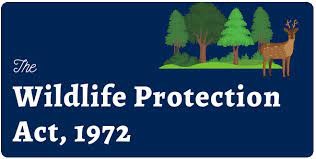Kerala Seeks Wildlife Act Amendment for Culling Wild Animals
Kerala Seeks Wildlife Act Amendment for Culling Wild Animals
Why in the News?
In recent Kerala news, the state government has requested the Union government to amend the Wildlife Protection Act, allowing controlled culling of wild animals that pose threats to human life and property. This move comes amid rising incidents of human-wildlife conflict in the state, as part of Kerala’s efforts to address the growing Kerala wildlife conflict causing significant distress to local communities in India Kerala.
Rising Wildlife-Human Conflict in Kerala:
- Kerala has identified 273 out of 941 village panchayats as wildlife conflict hotspots.
- Wild animals like tigers, leopards, elephants, bisons, wild boars, bonnet macaques, and peafowls are causing increasing distress to the local population. This surge in wildlife attacks has raised concerns about public safety and the need for effective Kerala wildlife management strategies.
- Even non-lethal species like bonnet macaques and peafowls are causing severe crop damage, forcing farmers to resort to agricultural abandonment. This crop destruction has led to significant economic hardship for the farming communities in Kerala.
- From 2016–2024, 919 people were killed and 8,967 injured in wildlife-related incidents, highlighting the urgent need for addressing the human-wildlife conflict in the region.
Causes of Escalating Animal-Human Encounters
- Deforestation and urbanisation have reduced forest cover, pushing wild animals into human settlements.
- Overgrazing by domestic cattle inside forest zones increases human-wildlife proximity.
- Wild boars and monkey populations have surged, increasing crop-raiding incidents and confrontations. The growing population of these animals has exacerbated the crop-raiding behavior, leading to significant agricultural losses.
Legal Constraints and Kerala’s Demands
- The Wildlife Protection Act mandates several conditions before any animal can be killed, even in emergencies. This act forms the backbone of wildlife conservation efforts in India but also poses challenges in addressing urgent conflict situations.
- Animals under Schedule I (like bonnet macaques since 2022) enjoy the highest protection, limiting quick action. This has led to debates on whether considering bonnet macaques vermin could help address the conflict.
- The state seeks to:
○ Remove bonnet macaques from Schedule I
○ Declare wild boars as vermin under Section 62
○ Allow time-bound culling for specific threats
- The Forest Minister emphasized this is not indiscriminate killing, but a response after preventive methods failed. The state is exploring options for controlled culling animals to manage the wildlife population effectively, including the possibility of issuing kill permits under strict conditions.
The Wild Life (Protection) Act, 1972: |
|
● Schedules I & II: Offer highest protection; offences attract severe penalties. |
|
● Schedule V: Lists vermin species (e.g., crows, bats, rats, mice) that can be hunted freely. |
|
● State Request: States may request the Central Government for vermin declaration due to threats to crops, property, or human life. |
|
● Central Notification: The Centre can declare certain species (excluding Schedule I & II-Part II) as vermin for specific areas and timeframes. |
|
● Impact: Declared vermin lose legal safeguards under WLPA and may be culled without penalty. |
The ongoing debate surrounding the amendment of the Wildlife Protection Act raises important questions about balancing wildlife conservation with the needs of local communities. While is hunting legal in India remains a complex issue, the proposed changes aim to provide more flexibility in managing wildlife populations that pose significant threats to human life and livelihoods.
As Kerala grapples with these challenges, it’s crucial to consider the broader implications for India wildlife management and conservation ethics. The state’s unique biodiversity of Kerala, coupled with its high Kerala population density, creates a complex scenario that requires careful consideration of both ecological and social factors.
The role of the Chief Wildlife Warden and Chief Conservators of Forests in implementing any potential changes will be crucial. Additionally, involving village local bodies in the decision-making process could help ensure that local perspectives are considered in wildlife management strategies.
As the situation evolves, it will be important to monitor how these proposed changes might impact the delicate balance between wild animal domestic animal interactions and overall ecosystem health in Kerala. The outcome of this debate could set important precedents for wildlife management and conservation efforts across India, potentially influencing policies related to the Kerala national animal and other protected species.





